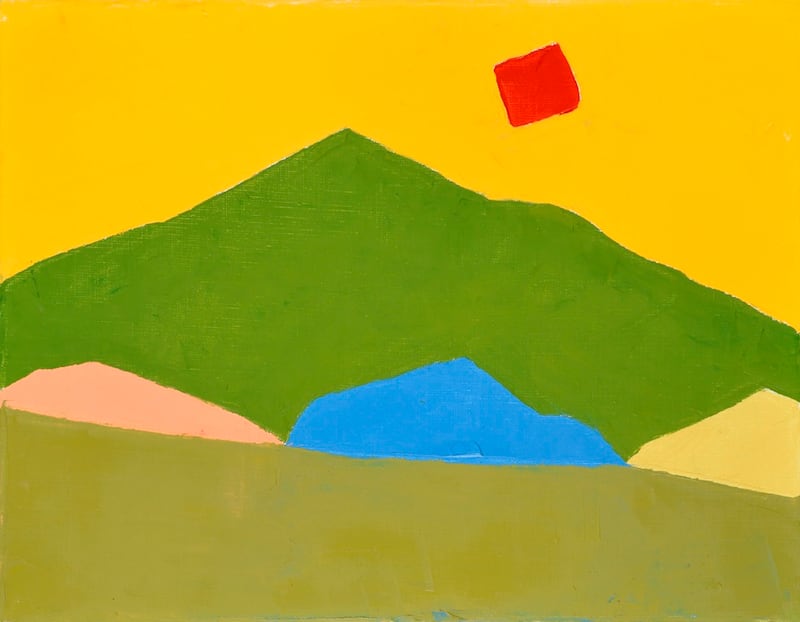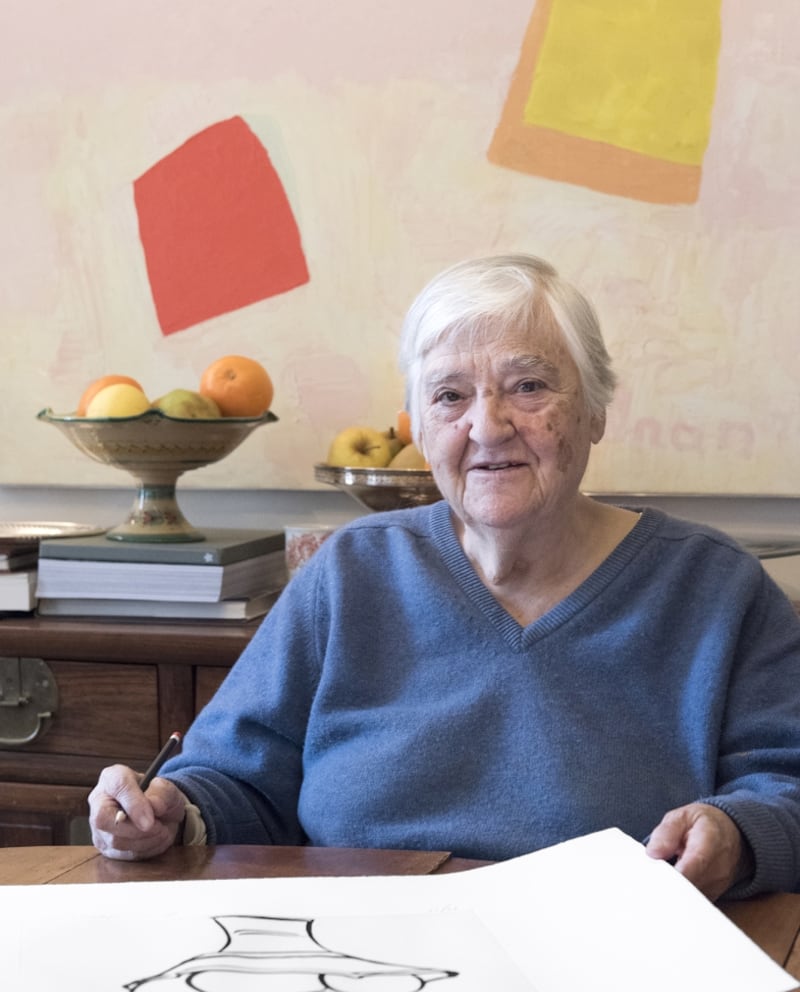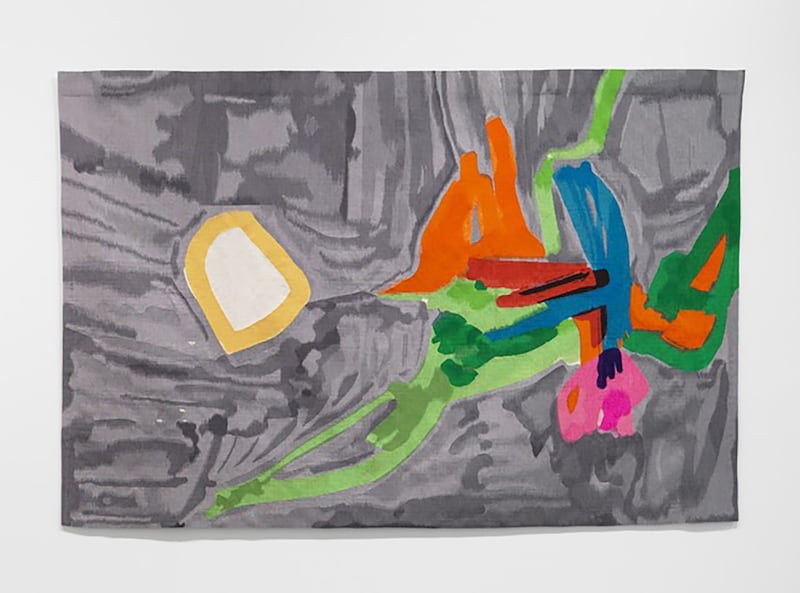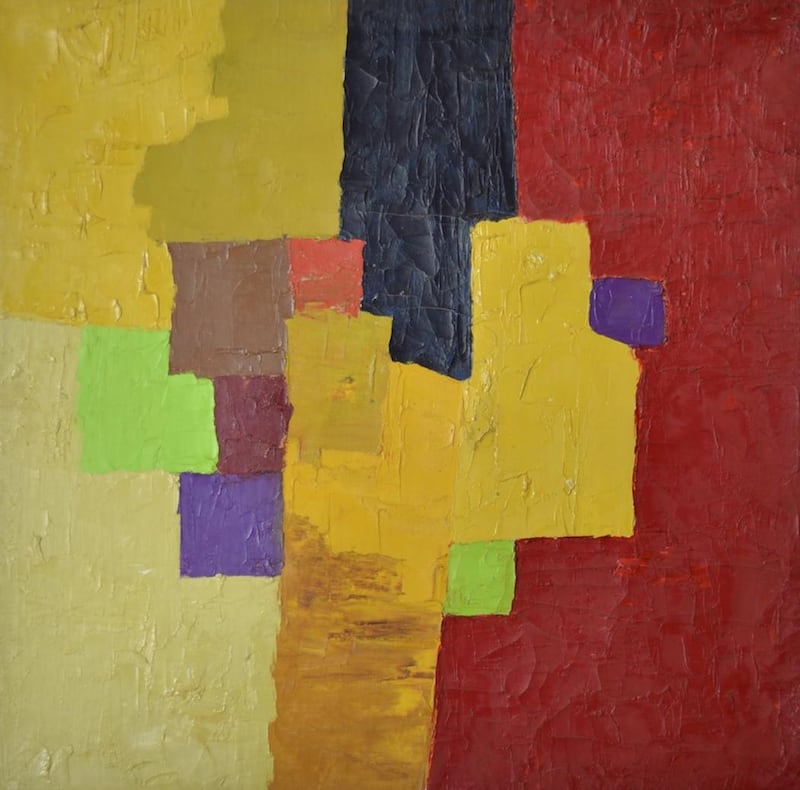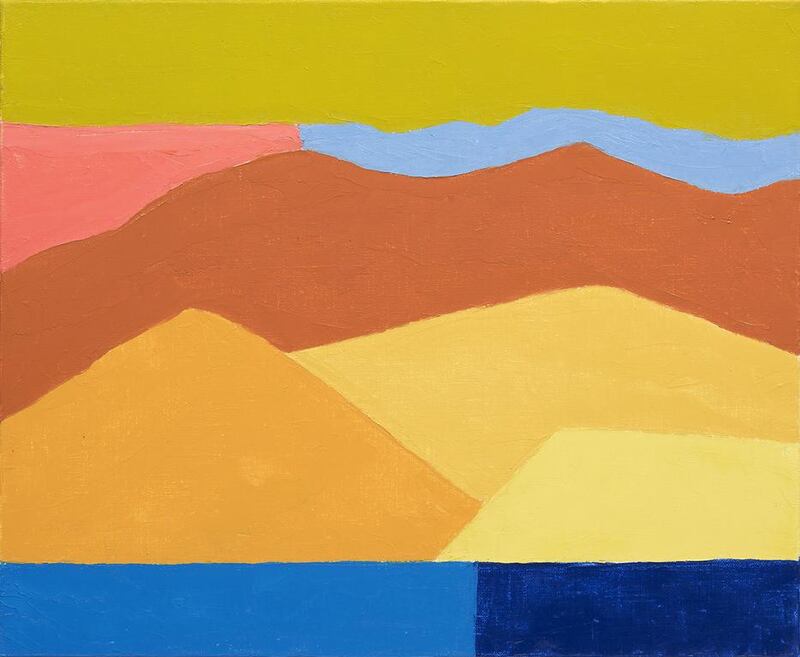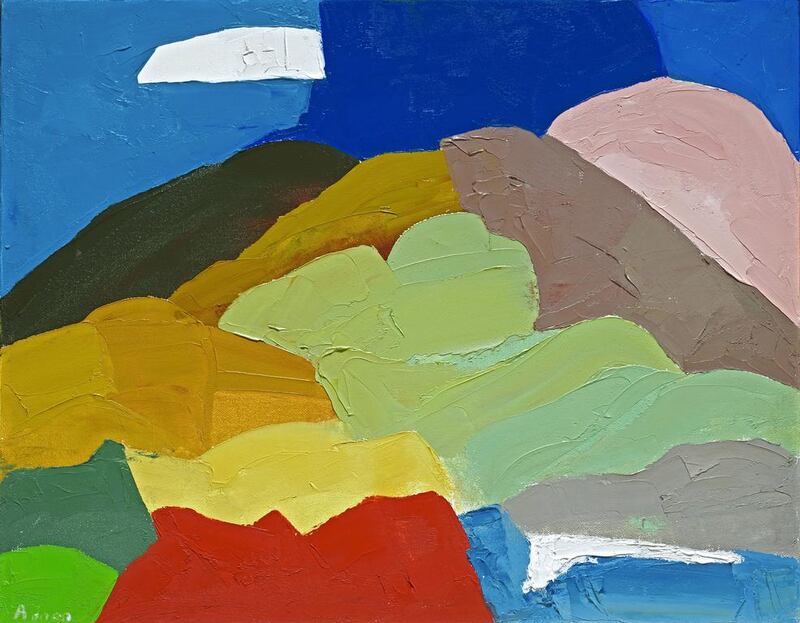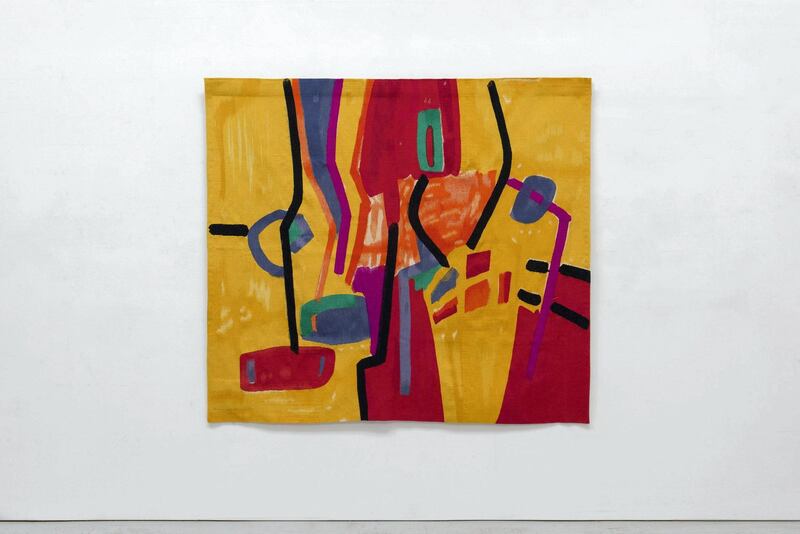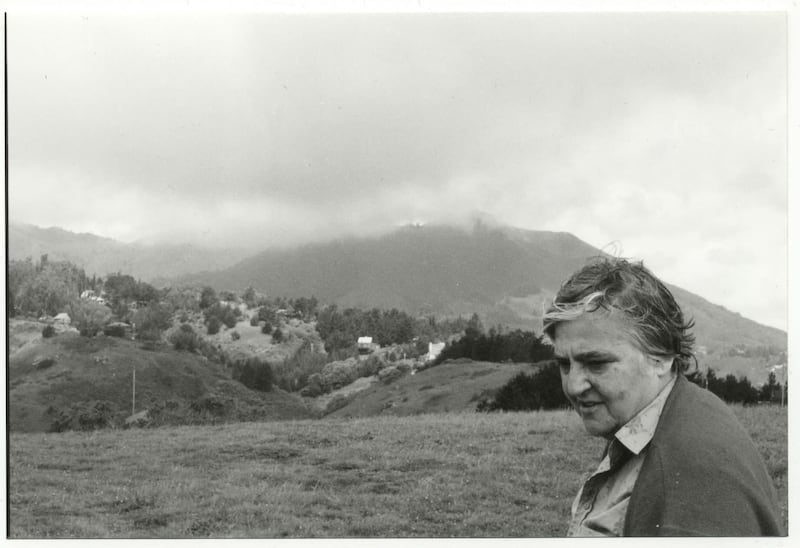American-Lebanese writer and artist Etel Adnan died on Sunday in Paris, aged 96. Her death was confirmed to The National by friends and colleagues of Adnan's and her partner.
In the last decade of her life, Adnan shot to fame for her brightly coloured abstract paintings inspired by the landscapes of California. Yet until her late eighties, she was primarily known as a writer and poet.
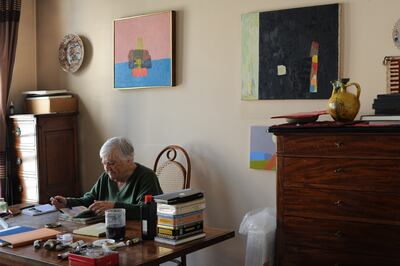
A literary pioneer
Her first novel, Sitt Marie Rose (1978), which she wrote while living in Paris, is set in the years before the Lebanese civil war. It tells the story of Marie Rose Boulos, who was captured and killed by three Christian militiamen, and is considered a polemical work against gender-based violence.
Adnan continued to produce politically engaged literary works, including The Arab Apocalypse (1980). She was an active contributor to Lebanese newspapers, and wrote about the Lebanese civil war, among other crises, for American and French publications.
Yet another major piece of writing, Journey to Mount Tamalpais (1986), revealed a different side to Adnan’s vision: a celebration of nature that persisted in her visual work. She wrote it after her return to California in the late '70s, where she lived in Sausalito, in the Bay Area.
Scroll through the gallery below to see more of Etel Adnan's paintings:
The travelogue depicts her fascination with the distant peak of Mount Tamalpais, which she saw from the window of her home. “The pyramidal shape of the mountain reveals a perfect Intelligence within the universe. Sometimes its power to melt in mist reveals the infinite possibilities for matter to change its appearance,” she wrote in Journey. “I watch its colours: they always astonish me.”
Adnan became obsessed with Mount Tamalpais. “When I saw it I felt at home,” she said in an interview for London’s The Serpentine Gallery.
It appeared as a recurring motif in her written and visual work, a sign of her deep connection to the landscapes of California. Her communion with nature as a source of lyricism firmly roots her in the American literary tradition, where she is often cited as a poet.
A career change
Adnan began painting in her mid-thirties. Among her notable early works was a series of leporellos, inspired by the Japanese book-folding technique, which included her drawings and text.
Through these leporellos, Adnan pioneered experiments with Arabic calligraphy, drawing on the legacy of modern Arab artists such as like Shaker Hassan Al Said. In these, she often included fragments of contemporary Arabic poetry, including those by Iraqi poet Badr Shakir Al Sayyab.
“The result is a real translation of the original Arabic poems into a visual equivalence. This Japanese format – where the paper unfolds – creates an horizontal plane that seems to be infinite,” she said, “The texts and the images are liberated.”
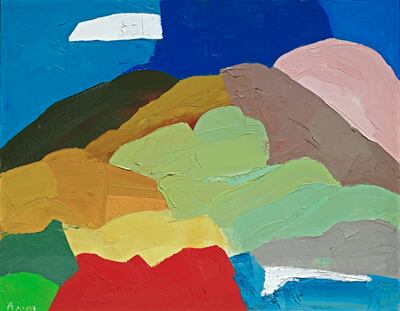
But Adnan also painted colourful and vivid landscapes on paper and canvas, which often verged towards abstraction. At Art Basel this year, she unveiled Le Soleil Toujours, a six metre-long mural composed of 136 hand-painted tiles, which depicts a shining sun among an abstract arrangement of colours.
Adnan was catapulted into the global art world in 2012, aged 87. Her works were shown at documenta in 2012, the major arts platform in Kassel, Germany. The curator that year, Carolyn Christov-Bakargiev, had encountered her work on an earlier trip to Lebanon. Adnan became known as “the shooting star of the art world”, and her style was compared to Swiss artist Paul Klee. In interviews, Adnan had complained that her age dominated stories about her work.
Yet this paved the way for major exhibitions at cultural institutions around the world, including at the Mathaf in Doha (2014), London’s Serpentine Gallery (2016), Paris’s Institut du Monde Arabe (2016), and Bern’s Zentrum Paul Klee and the San Francisco Museum of Modern Art (2018), among others.
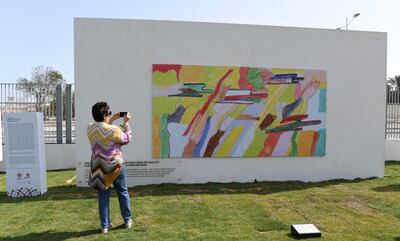
Her work is currently the subject of a solo show at New York’s Guggenheim until January next year, and is part of a collaboration with architect Hala Warde for the Lebanese Pavilion at the Venice Architecture Biennale 2021.
Who was Etel Adnan?
Adnan was born in Lebanon, the daughter of a Damascus-born, high-ranking officer in the Ottoman army, and a Greek refugee to Lebanon from Smyrna. “I grew up with people whose worlds, whose lives, had been destroyed. So I understand devastation, I understand refugees, I understand defeat,” she said in an interview with arts magazine Apollo in 2018.
But it was also a Levantine household where nationhood and nationality were new concepts. At home, she spoke Turkish and Greek, and at school, she learnt French. This may have contributed to Adnan’s own peripatetic life. In the same interview, she described herself as a “a Californian artist. I wouldn’t say American”. Likewise, describing her as an “Arab” artist may be inaccurate.
Her poetry often evoked an internationalist world view. In her poem It was Beirut All Over Again…Again (1990), published in The Middle East Report, Adnan laments US foreign policy in El Salvador, recalling atrocities in Beirut from Lebanon's civil war. “It was Beirut on the radio / El Salvador on TV / It was Sabra & Shatila / in the memory / It was Usulutan in the heart,” she wrote.
Adnan studied Philosophy at the Sorbonne in Paris, followed by graduate studies at Berkeley, University of California and Harvard University in Massachusetts. In the 1970s, she returned briefly to Lebanon, where she worked at two daily newspapers, L’Orient Le Jour and Al Safa. There, she met her partner, artist Simone Fattal, and after the outbreak of the civil war, they moved together to Paris before Adnan’s return to California.
In the final years of her life, Adnan continued to produce prolifically. Unable to travel, she was eventually grounded in Paris with Fattal. And though she no longer had a view on to Mount Tamalpais, nature pervaded as she watched the crisis in Lebanon and the global pandemic unfold.
For the Lebanese Pavilion in Venice this year, she showed paintings of olive trees, often used to describe pastoral life in Lebanon, from 2019. “There are spaces like breaths. As with the life of trees, we sometimes feel like eavesdropping and listening to them,” Adnan said, of the series.
And, in one of her last interviews with curator Hans Ulrich Obrist, she celebrated the impact of global lockdowns on the environment. “The trees have come back to life. Stopped crying. Like we will all do," she told him. "Times are hard. But in the 1960s we were singing 'we shall overcome' and we did. Good things repeat themselves like spring does.”
